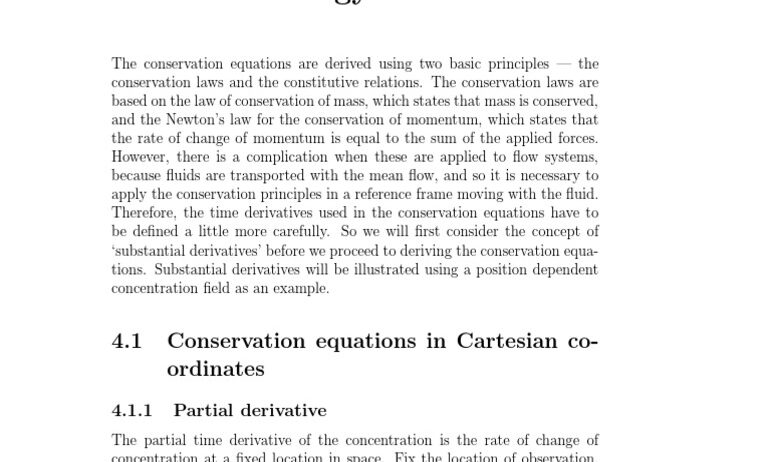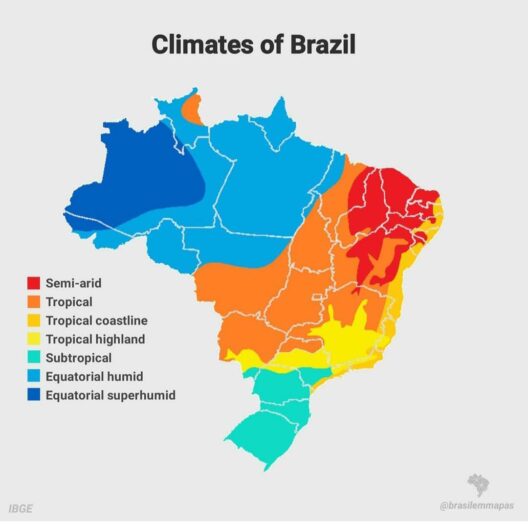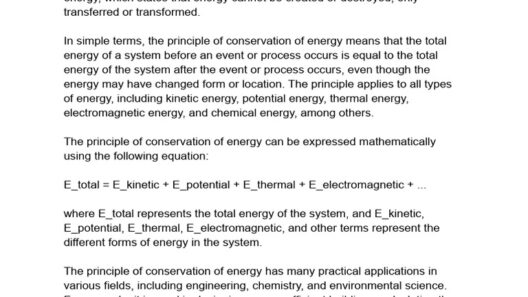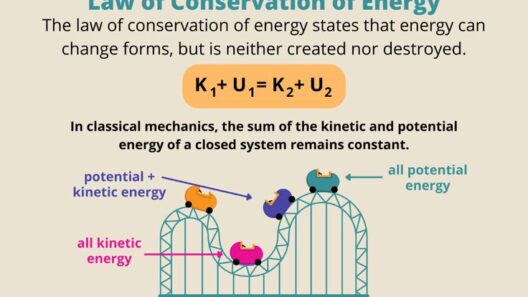Conservation of mass and energy is a fundamental principle that underlies the natural sciences, serving as a cornerstone in our understanding of the physical universe. At its essence, this principle posits that mass cannot be created or destroyed in an isolated system. Similarly, the total energy within that system remains constant; it can neither be generated nor annihilated, only transformed from one form to another. This duality encapsulates the foundational framework from physics to chemistry and beyond.
The inception of these concepts traces back to the early 19th century, when scientists began systematically studying the nature of matter and energy. Initially delineated through the lens of isolated systems, these principles have evolved and been extensively validated through experimentation and observation. The ramifications of grasping this duality extend far beyond theoretical musings; they have been pivotal in the advancement of technology and environmental science, promising a shift in perspective on how we approach resource utilization.
At a microscopic level, the conservation of mass is demonstrated through chemical reactions. When substances react, the total mass of the reactants is equal to the total mass of the products. This immutable law challenges the reductionist view of matter, revealing complexity within processes. For example, consider how hydrogen and oxygen combine to form water. Even with the transitions involved, the sum of masses remains invariant. This principle lays the groundwork for stoichiometry, a tool fundamental to understanding chemical equations and reactions.
Switching gears to energy, the conservation principle asserts that energy manifests in various forms—thermal, kinetic, electrical, chemical—yet the total energy in an isolated system remains unchanged. This understanding provides a lens through which to view mechanical systems, where energy transference occurs, such as in a pendulum swinging, where potential energy at its apex transforms into kinetic energy at its nadir. These interconversions signify not loss but a transformation, leading to the profound insight that our energy dilemmas are rooted not in the lack of energy but in our ineffective management of its myriad forms.
The implications of the conservation of mass and energy for environmental sustainability cannot be overstated. By comprehending these principles, we are poised to tackle pressing issues like climate change and resource depletion more effectively. For instance, the transition to renewable energy sources—wind, solar, hydro—recognizes the finite amount of fossil fuel-derived energy available. Harnessing the abundant energy from natural processes exemplifies the transformation rather than mere consumption—ensuring continuity within our ecosystems.
Furthermore, the conservation principles propel advances in technological innovations. This has profound applications in fields such as thermodynamics, where the efficiency of energy systems is paramount. The creation of energy-efficient appliances capitalizes on reducing waste while maintaining performance. By minimizing the energy expended in operating household systems, we adhere to the conservation principle by ensuring that energy is utilized optimally, without unnecessary degradation.
Yet, energy conservation transcends mere efficiency enhancements. It’s also about behavioral modification and cultural shifts in perception. By instilling a conservation mindset, we begin to view energy not as an inexhaustible commodity but as a valuable resource that requires respect and judicious use. This paradigm shift encourages us to question our consumption patterns: Do we truly need that additional electronic device? Could we minimize our carbon footprint by integrating simple lifestyle changes, such as embracing public transportation or utilizing energy-efficient solutions?
Through myriad educational initiatives and policy frameworks, understanding conservation of mass and energy fosters an environment where ecological consciousness thrives. From grassroots campaigns advocating for minimalism to sweeping legislative bans on single-use plastic, every effort builds upon the foundation established by these scientific principles. We recognize that while human ingenuity can both exploit and enhance nature, a symbiotic approach based on these laws can lead to sustainable living.
Moreover, the interrelation between mass and energy conservation invites reflection on ecological footprints—wherein every action reverberates throughout our biosphere. By visualizing our ecological interactions through a conservation lens, we become acutely aware of the cyclical nature of existence. For instance, the carbon cycle displays how carbon atoms traverse through living systems, from plants to animals to decomposers, all the while adhering to the conservation laws. This web of interdependence highlights the importance of maintaining biodiversity and ecosystem stability as we navigate the anthropogenic pressures that threaten these delicate balances.
Embracing the conservation of mass and energy does not merely satisfy a scientific curiosity; it invokes a profound ethical responsibility. As stewards of the planet, we have the ethical obligation to use these scientific principles as templates guiding our decision-making. Whether through policy-making, corporate responsibility, or individual lifestyle choices, the essence of conservation is to ensure that we live within our means—ecologically and energetically.
The journey forward hinges on our collective comprehension of these principles. With an enlightened approach, we can pivot toward a paradigm that prioritizes sustainability, innovation, and responsible stewardship. Ultimately, the conservation of mass and energy acts as a gravitational force pulling together disparate narratives into a coherent discourse on our roles within this complex, interconnected world.
In summary, conservation of mass and energy is not merely an abstract concept reserved for academia; it is a pragmatic framework that holds great promise for reshaping our collective consciousness and advancing sustainable practices. As humanity grapples with unprecedented environmental challenges, the science of conservation illuminates pathways forward, urging us to act with urgency and intention. Understanding and implementing these principles can cultivate a thriving future that harmonizes human existence with the natural world.








